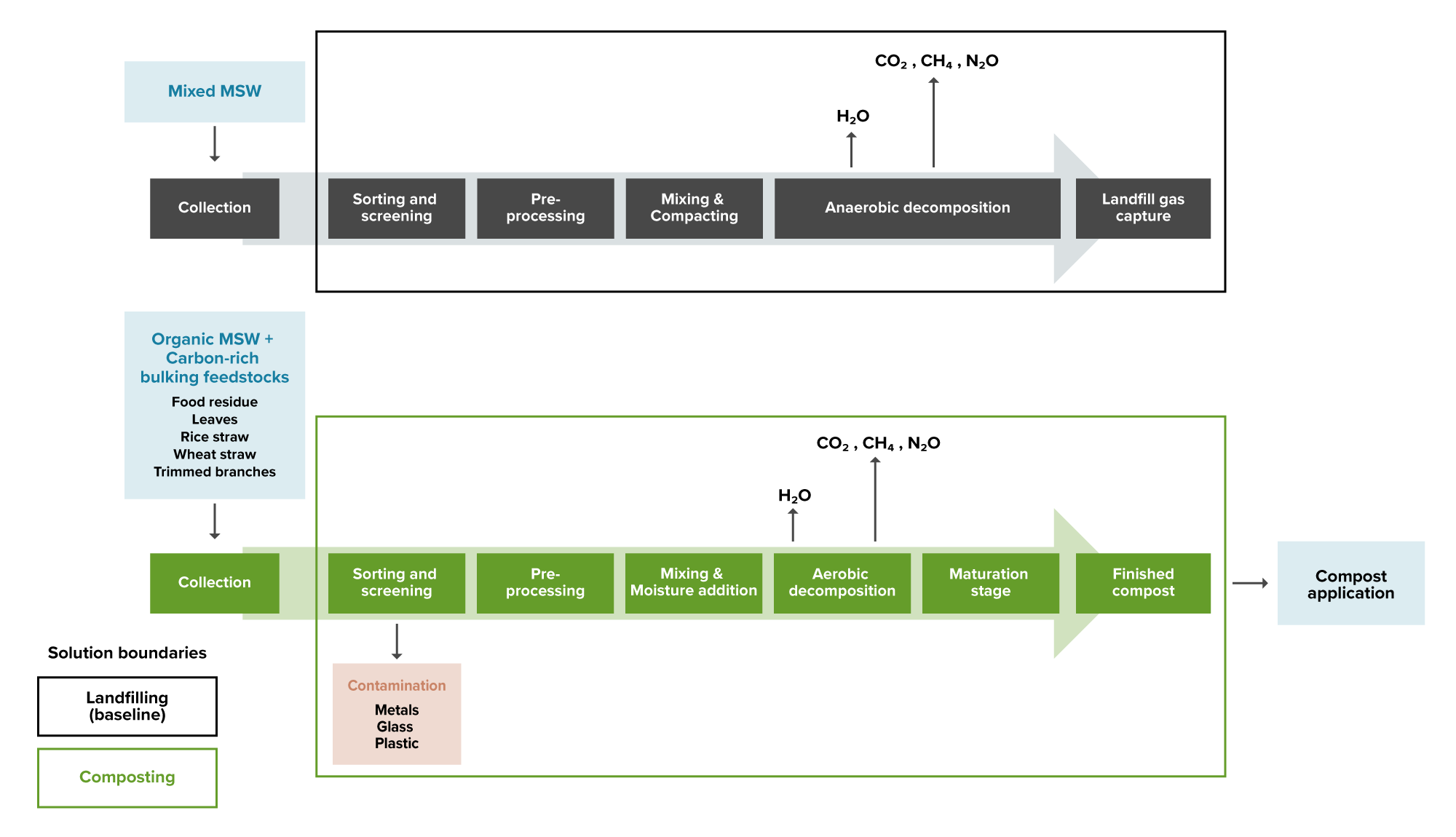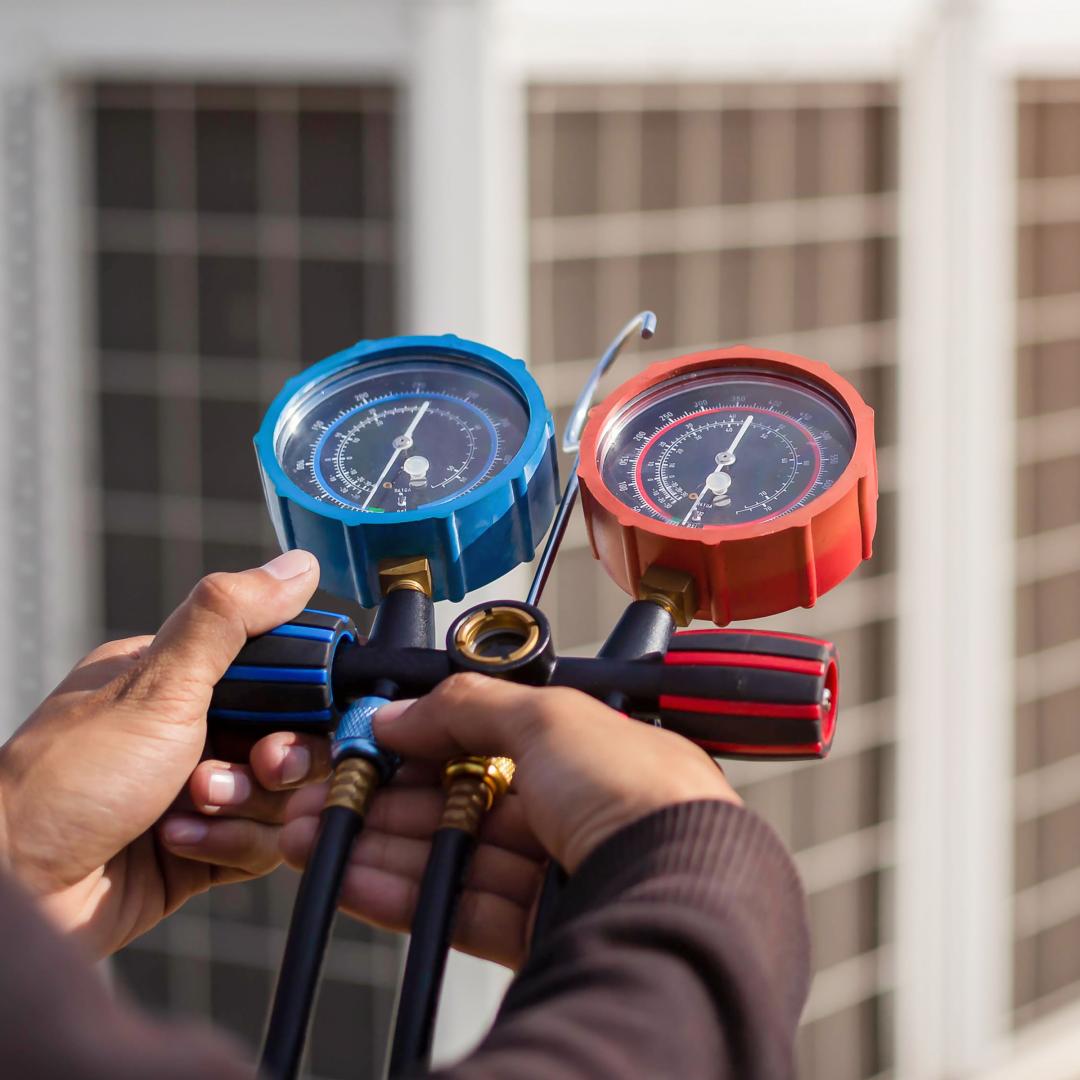Alves Comesaña, D., Villar Comesaña, I., & Mato de la Iglesia, S. (2024). Community composting strategies for biowaste treatment: Methodology, bulking agent and compost quality. Environmental Science and Pollution Research, 31(7), 9873–9885. Link to source: https://doi.org/10.1007/s11356-023-25564-x
Amuah, E. E. Y., Fei-Baffoe, B., Sackey, L. N. A., Douti, N. B., & Kazapoe, R. W. (2022). A review of the principles of composting: Understanding the processes, methods, merits, and demerits. Organic Agriculture, 12(4), 547–562. Link to source: https://doi.org/10.1007/s13165-022-00408-z
Ayilara, M., Olanrewaju, O., Babalola, O., & Odeyemi, O. (2020). Waste management through composting: Challenges and potentials. Sustainability, 12(11), Article 4456. Link to source: https://doi.org/10.3390/su12114456
Bekchanov, M., & Mirzabaev, A. (2018). Circular economy of composting in Sri Lanka: Opportunities and challenges for reducing waste related pollution and improving soil health. Journal of Cleaner Production, 202, 1107–1119. Link to source: https://doi.org/10.1016/j.jclepro.2018.08.186
Bell, B., & Platt, B. (2014). Building healthy soils with compost to protect watersheds. Institute for Local Self-Reliance. Link to source: https://ilsr.org/wp-content/uploads/2013/05/Compost-Builds-Healthy-Soils-ILSR-5-08-13-2.pdf
Brown, S. (2015, July 14). Connections: YIMBY. Biocycle. Link to source: https://www.biocycle.net/connections-yimby/
Cai, B., Lou, Z., Wang, J., Geng, Y., Sarkis, J., Liu, J., & Gao, Q. (2018). CH4 mitigation potentials from China landfills and related environmental co-benefits. Science Advances, 4(7), Article eaar8400. Link to source: https://doi.org/10.1126/sciadv.aar8400
Cao, X., Williams, P. N., Zhan, Y., Coughlin, S. A., McGrath, J. W., Chin, J. P., & Xu, Y. (2023). Municipal solid waste compost: Global trends and biogeochemical cycling. Soil & Environmental Health, 1(4), Article 100038. Link to source: https://doi.org/10.1016/j.seh.2023.100038
Casey, J. A., Cushing, L., Depsky, N., & Morello-Frosch, R. (2021). Climate justice and California’s methane superemitters: Environmental equity Assessment of community proximity and exposure intensity. Environmental Science & Technology, 55(21), 14746–14757. Link to source: https://doi.org/10.1021/acs.est.1c04328
Coker, C. (2020, March 3). Composting business management: Revenue forecasts for composters. Biocycle. Link to source: https://www.biocycle.net/composting-business-management-revenue-forecasts-composters/
Coker, C. (2020, March 10). Composting business management: Capital cost of composting facility construction. Biocycle. Link to source: https://www.biocycle.net/composting-business-management-capital-cost-composting-facility-construction/
Coker, C. (2020, March 17). Composting business management: Composting facility operating cost estimates. Biocycle. Link to source: https://www.biocycle.net/composting-business-management-composting-facility-operating-cost-estimates/
Coker, C. (2022, August 23). Compost facility planning: Composting facility approvals and permits. Biocycle. Link to source: https://www.biocycle.net/composting-facility-approval-permits/
Coker, C. (2022, September 27). Compost facility planning: Composting facility cost estimates. Biocycle. Link to source: https://www.biocycle.net/compost-facility-planning-cost/
Coker, C. (2024, August 20). Compost market development. Biocycle. Link to source: https://www.biocycle.net/compost-market-development/
European Energy Agency. (2024). Greenhouse gas emissions by source sector. (Last Updated: April 18, 2024). Eurostat. [Data set and codebook]. Link to source: https://ec.europa.eu/eurostat/databrowser/view/env_air_gge__custom_16006716/default/table
Farhidi, F., Madani, K., & Crichton, R. (2022). How the US economy and environment can both benefit from composting management. Environmental Health Insights, 16. Link to source: https://doi.org/10.1177/11786302221128454
Food and Agriculture Organization of the United Nations. (2024). The state of food and agriculture 2024 – Value-driven transformation of agrifood systems. Link to source: https://doi.org/10.4060/cd2616en
Finlay, K. (2024). Turning down the heat: how the U.S. EPA can fight climate change by cutting landfill emissions. Industrious Labs. Link to source: https://cdn.sanity.io/files/xdjws328/production/657706be7f29a20fe54692a03dbedce8809721e8.pdf
González, D., Barrena, R., Moral-Vico, J., Irigoyen, I., & Sánchez, A. (2024). Addressing the gaseous and odour emissions gap in decentralised biowaste community composting. Waste Management, 178, 231–238. Link to source: https://doi.org/10.1016/j.wasman.2024.02.042
International Energy Agency. (2024), Global Methane Tracker 2024. Link to source: https://www.iea.org/reports/global-methane-tracker-2024
International Energy Agency. (2025). Outlook for biogas and biomethane. Link to source: https://www.iea.org/reports/outlook-for-biogas-and-biomethane
Intergovernmental Panel On Climate Change. (2023). Climate change 2022 – Impacts, adaptation and vulnerability: Working Group II contribution to the sixth assessment report of the Intergovernmental Panel on Climate Change (1st ed.). Cambridge University Press. Link to source: https://doi.org/10.1017/9781009325844
Intergovernmental Panel On Climate Change. (2019). 2019 Refinement to the 2006 IPCC Guidelines for National Greenhouse Gas Inventories, Calvo. Buendia, E., Tanabe, K., Kranjc, A., Baasansuren, J., Fukuda, M., Ngarize S., Osako, A., Pyrozhenko, Y., Shermanau, P. and Federici, S. (eds). Link to source: https://www.ipcc-nggip.iges.or.jp/public/2019rf/index.html
Jamroz, E., Bekier, J., Medynska-Juraszek, A., Kaluza-Haladyn, A., Cwielag-Piasecka, I., & Bednik, M. (2020). The contribution of water extractable forms of plant nutrients to evaluate MSW compost maturity: A case study. Scientific Reports, 10(1), Article 12842. Link to source: https://doi.org/10.1038/s41598-020-69860-9
Kawai, K., Liu, C., & Gamaralalage, P. J. D. (2020). CCET guideline series on intermediate municipal solid waste treatment technologies: Composting. United Nations Environment Programme. Link to source: https://www.unep.org/ietc/resources/publication/ccet-guideline-series-intermediate-municipal-solid-waste-treatment
Kaza, S., Yao, L. C., Bhada-Tata, P., Van Woerden, F., (2018). What a waste 2.0: A global snapshot of solid waste management to 2050. Urban Development. World Bank. Link to source: http://hdl.handle.net/10986/30317
Krause, M., Kenny, S., Stephenson, J., & Singleton, A. (2023). Quantifying methane emissions from landfilled food waste (Report No. EPA-600-R-23-064). U.S. Environmental Protection Agency Office of Research and Development. Link to source: https://www.epa.gov/system/files/documents/2023-10/food-waste-landfill-methane-10-8-23-final_508-compliant.pdf
Liu, K-. M., Lin, S-. H., Hsieh, J-., C., Tzeng, G-., H. (2018). Improving the food waste composting facilities site selection for sustainable development using a hybrid modified MADM model. Waste Management, 75, 44–59. Link to source: https://doi.org/10.1016/j.wasman.2018.02.017
Maalouf, A., & Agamuthu, P. (2023). Waste management evolution in the last five decades in developing countries – A review. Waste Management & Research: The Journal for a Sustainable Circular Economy, 41(9), 1420–1434. Link to source: https://doi.org/10.1177/0734242X231160099
Manea, E. E., Bumbac, C., Dinu, L. R., Bumbac, M., & Nicolescu, C. M. (2024). Composting as a sustainable solution for organic solid waste management: Current practices and potential improvements. Sustainability, 16(15), Article 6329. Link to source: https://doi.org/10.3390/su16156329
Martínez-Blanco, J., Lazcano, C., Christensen, T. H., Muñoz, P., Rieradevall, J., Møller, J., Antón, A., & Boldrin, A. (2013). Compost benefits for agriculture evaluated by life cycle assessment. A review. Agronomy for Sustainable Development, 33(4), 721–732. Link to source: https://doi.org/10.1007/s13593-013-0148-7
Martuzzi, M., Mitis, F., & Forastiere, F. (2010). Inequalities, inequities, environmental justice in waste management and health. The European Journal of Public Health, 20(1), 21–26. Link to source: https://doi.org/10.1093/eurpub/ckp216
Nordahl, S. L., Devkota, J. P., Amirebrahimi, J., Smith, S. J., Breunig, H. M., Preble, C. V., Satchwell, A. J., Jin, L., Brown, N. J., Kirchstetter, T. W., & Scown, C. D. (2020). Life-Cycle greenhouse gas emissions and human health trade-offs of organic waste management strategies. Environmental Science & Technology, 54(15), 9200–9209. Link to source: https://doi.org/10.1021/acs.est.0c00364
Nordahl, S. L., Preble, C. V., Kirchstetter, T. W., & Scown, C. D. (2023). Greenhouse gas and air pollutant emissions from composting. Environmental Science & Technology, 57(6), 2235–2247. Link to source: https://doi.org/10.1021/acs.est.2c05846
Organisation for Economic Co-operation and Development. (2021). Waste - Municipal waste: generation and treatment. (Downloaded: March 20, 2025) [Data set]. Link to source: https://data-explorer.oecd.org/vis?lc=en&df[ds]=dsDisseminateFinalDMZ&df[id]=DSD_MUNW%40DF_MUNW&df[ag]=OECD.ENV.EPI&dq=.A.INCINERATION_WITHOUT%2BLANDFILL.T&pd=2014%2C&to[TIME_PERIOD]=false&vw=ov
Pérez, T., Vergara, S. E., & Silver, W. L. (2023). Assessing the climate change mitigation potential from food waste composting. Scientific Reports, 13(1), Article 7608. Link to source: https://doi.org/10.1038/s41598-023-34174-z
Platt, B., Bell, B., & Harsh, C. (2013). Pay dirt: Composting in Maryland to reduce waste, create jobs, & protect the bay. Institute for Local Self-Reliance. Link to source: https://ilsr.org/wp-content/uploads/2013/05/Pay-Dirt-Report.pdf
Platt, B. (2017, April 4). Hierarchy to Reduce Food Waste & Grow Community, Institute for Local Self-Reliance. Link to source: https://ilsr.org/articles/food-waste-hierarchy/
Platt, B., and Fagundes, C. (2018). Yes! In my backyard: A home composting guide for local government. Institute for Local Self-Reliance. Link to source: https://ilsr.org/articles/yimby-compost/
Platt, B., Libertelli, C., & Matthews, M. (2022). A growing movement: 2022 community composter census. Institute for Local Self-Reliance. Link to source: https://ilsr.org/articles/composting-2022-census/
Ricci-Jürgensen, M., Gilbert, J., & Ramola, A.. (2020a). Global assessment of municipal organic waste production and recycling. International Solid Waste Association. Link to source: https://www.altereko.it/wp-content/uploads/2020/03/Report-1-Global-Assessment-of-Municipal-Organic-Waste.pdf
Ricci-Jürgensen, M., Gilbert, J., & Ramola, A.. (2020b). Benefits of compost and anaerobic digestate when applied to soil. International Solid Waste Association. Link to source: https://www.altereko.it/wp-content/uploads/2020/03/Report-2-Benefits-of-Compost-and-Anaerobic-Digestate.pdf
Rynk, R., Black, G., Biala, J., Bonhotal, J., Cooperband, L., Gilbert, J., & Schwarz, M. (Eds.). (2021). The composting handbook. Compost Research & Education Foundation and Elsevier. Link to source: https://www.compostingcouncil.org/store/viewproduct.aspx?id=19341051
Sánchez, A., Gea, T., Font, X., Artola, A., Barrena, R., & Moral-Vico, J. (Eds.). (2025). Composting: Fundamentals and Recent Advances: Chapter 1. Royal Society of Chemistry. Link to source: https://doi.org/10.1039/9781837673650
Souza, M. A. d., Gonçalves, J. T., & Valle, W. A. d. (2023). In my backyard? Discussing the NIMBY effect, social acceptability, and residents’ involvement in community-based solid waste management. Sustainability, 15(9), Article 7106. Link to source: https://doi.org/10.3390/su15097106
The Environmental Research & Education Foundation. (2024). Analysis of MSW landfill tipping fees — 2023. Link to source: https://erefdn.org/product/analysis-of-msw-landfill-tipping-fees-2023/
U.S. Composting Council. (2008). Greenhouse gases and the role of composting: A primer for compost producers [Fact sheet]. Link to source: https://cdn.ymaws.com/www.compostingcouncil.org/resource/resmgr/documents/GHG-and-Role-of-Composting-a.pdf
U.S. Environmental Protection Agency. (2020). 2018 wasted food report (EPA Publication No. EPA 530-R-20-004). Office of Resource Conservation and Recovery. Link to source: https://www.epa.gov/system/files/documents/2025-02/2018_wasted_food_report-v2.pdf
U.S. Environmental Protection Agency. (2023). 2019 Wasted food report (EPA Publication No. 530-R-23-005). National Institutes of Health. Link to source: https://www.epa.gov/system/files/documents/2024-04/2019-wasted-food-report_508_opt_ec_4.23correction.pdf
U.S. Environmental Protection Agency. (2023). Documentation for Greenhouse Gas Emission and Energy Factors Used in the Waste Reduction Model (WARM): Organic Materials Chapters (EPA Publication No. EPA-530-R-23-019). Office of Resource Conservation and Recovery. Link to source: https://www.epa.gov/system/files/documents/2023-12/warm_organic_materials_v16_dec.pdf
U.S. Environmental Protection Agency. (2025, January). Approaches to composting. Link to source: https://www.epa.gov/sustainable-management-food/approaches-composting
U.S. Environmental Protection Agency. (2025, April). Benefits of using compost. Link to source: https://www.epa.gov/sustainable-management-food/benefits-using-compost
United Nations Environment Programme. (2023). Towards Zero Waste: A Catalyst for delivering the Sustainable Development Goals. Link to source: https://doi.org/10.59117/20.500.11822/44102
United Nations Environment Programme. (2024). Global Waste Management Outlook 2024 Beyond an age of waste: Turning rubbish into a resource. Link to source: https://www.unep.org/resources/global-waste-management-outlook-2024
Urra, J., Alkorta, I., & Garbisu, C. (2019). Potential benefits and risks for soil health derived from the use of organic amendments in agriculture. Agronomy, 9(9), 542. Link to source: https://doi.org/10.3390/agronomy9090542
Wilson, D. C., Paul, J., Ramola, A., & Filho, C. S. (2024). Unlocking the significant worldwide potential of better waste and resource management for climate mitigation: With particular focus on the Global South. Waste Management & Research: The Journal for a Sustainable Circular Economy, 42(10), 860–872. Link to source: https://doi.org/10.1177/0734242X241262717
World Bank. (2018). What a waste global database: Country-level dataset. (Last Updated: June 4, 2024) [Data set]. World Bank. Link to source: https://datacatalogfiles.worldbank.org/ddh-published/0039597/3/DR0049199/country_level_data.csv
Yasmin, N., Jamuda, M., Panda, A. K., Samal, K., & Nayak, J. K. (2022). Emission of greenhouse gases (GHGs) during composting and vermicomposting: Measurement, mitigation, and perspectives. Energy Nexus, 7, Article 100092. Link to source: https://doi.org/10.1016/j.nexus.2022.100092
Zaman, A. U. (2016). A comprehensive study of the environmental and economic benefits of resource recovery from global waste management systems. Journal of Cleaner Production, 124, 41–50. Link to source: https://doi.org/10.1016/j.jclepro.2016.02.086
Zero Waste Europe & Bio-based Industries Consortium. (2024). Bio-waste generation in the EU: Current capture levels and future potential (Second edition). LIFE Programme of the European Union. Link to source: https://zerowasteeurope.eu/library/bio-waste-generation-in-the-eu-current-capture-levels-and-future-potential-second-edition/
Zhu, J., Luo, Z., Sun, T., Li, W., Zhou, W., Wang, X., Fei, X., Tong, H., & Yin, K. (2023). Cradle-to-grave emissions from food loss and waste represent half of total greenhouse gas emissions from food systems. Nature Food, 4(3), 247–256. Link to source: https://doi.org/10.1038/s43016-023-00710-3







